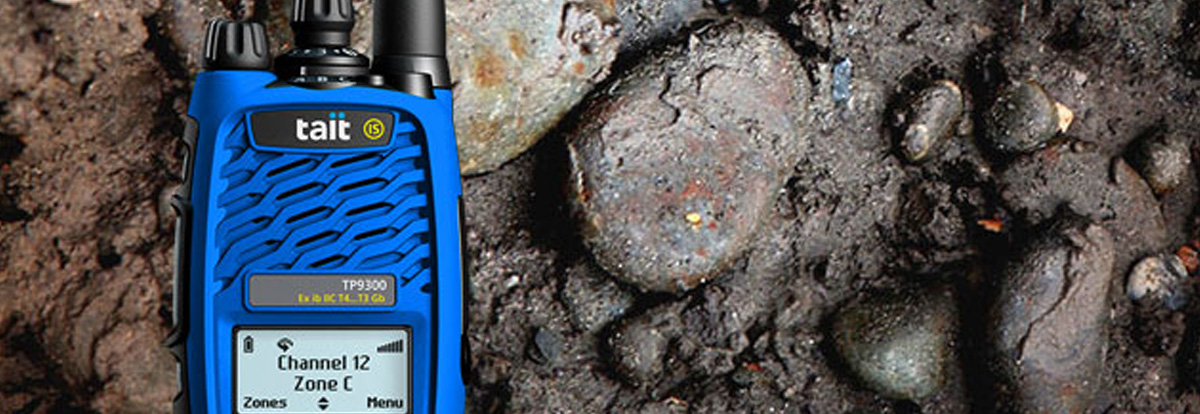


Keep Users Connected in Hazardous Areas
In an increasingly safety-conscious world, employers must protect their workers from risk of explosion, where there is a known risk-element of their equipment becoming an ignition source in an explosive atmospheric environment.
Internationally, large numbers of organizations are responding to legislative changes, insurance requirements, and occupational health and safety legislation to ensure the ongoing safety of their staff.
A Hazardous area may be defined wherever volatile or flammable substances, such as fuel, gas, or flammable dusts are present. Due to their potential of heat generation or sparking, specialized smartphones and hand-held radios use a number of methods to meet safety standards. One of these methods is Intrinsic Safety. Intrinsically Safe devices from Tait are designed to the same high standard of operation, and provide most of the features and performance of a non-IS model.
The International Electrotechnical Commission (IEC) standard for explosive atmospheres (Ex) equipment, the IEC 60079 series, is now the international benchmark. It is currently used in more than 30 IECEx member countries including Australia, Brazil, China, Great Britain, New Zealand, Canada, and the USA. Tait Intrinsically Safe devices are rigorously assessed to ensure user safety and that it will not ignite explosive atmospheres in hazardous locations. These high standards and regulations ensure that these devices remain safe even if the radio's functionality is compromised.
The IEC 60079-11 standard covers both the radio and battery. For the battery to be removable in a hazardous environment, it must be completely intrinsically safe in its own right. Not every radio brand has this degree of battery protection. Read more about our Intrinsically Safe portables available in both P25 and DMR or speak with one of our representatives about Intrinsically Safe options today.